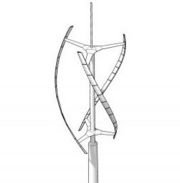Open collaborative design
|
{{:Open collaborative design/{{{1}}}}}
There is no reason why open source development methods currently used with many software projects cannot be applied to machines and systems in the physical world. In fact physical objects are much more intuitive to understand than abstract computer code especially when viewed using 3D CAD that can show grouped sub-assemblies, exploded views, kinematics, cross-sections, supporting animations and notes. It is just that the freely available tools and infrastructure needed for this to be possible do not yet exist in a user-friendly and mature state needed for widespread adoption. All the technologies exist, they just need to be put together in the right way and refined.
The simplest method is to share information through a website on how to make things using text, diagrams and photographs. A more sophisticated way to collaborate on complex machinery and products would be to share CAD assemblies much like project teams do in engineering and product design companies, knitted together with supporting information in an open and freely structured environment, much like a wiki There are certain barriers to overcome for open design when compared to software development where there are mature and widely used tools available, and the duplication and distribution of code cost next to nothing. Creating, testing and modifying physical designs is not quite as straightforward because of the effort and time required to create the physical artifact. However the physical world is catching up fast with the virtual world in this respect.
With many people contributing to open design projects, as happens currently with software, a universal commons will emerge made up of vast libraries of designs for everything from components and sub-assemblies through to complete artefacts, machines and complex systems, available for anyone to download and incorporate into their own designs, or help evolve as part of a wider project.
As in software, it would be useful for components and assemblies to be as 're-usable' as possible in the sense of being able to be incorporated in many different machine designs. To aid this it should be possible to specify the vital dynamic functions of a component or assembly in the CAD software, so that it can easily be modified in shape and scale so it can be incorporated into a new design while ensuring it still works correctly. This will enable a huge reduction in duplication of effort and allow people to focus their efforts on creating new machines of increasing complexity and building on the work of others. One interesting side-effect of open collaboration is that it tends to lead to highly modular design. FireFox and Linux are examples of this. Modularity also leads to a high degree of reusability; someone designing a new piece of hardware or software can pick-and-mix parts of existing projects. This works well in software, but may have to be abstracted somewhat to work in physical systems where dimensions are obviously important to fit with other components. |
 [print version]
[print version]  [update]
[update]  [site map]
[site map]

